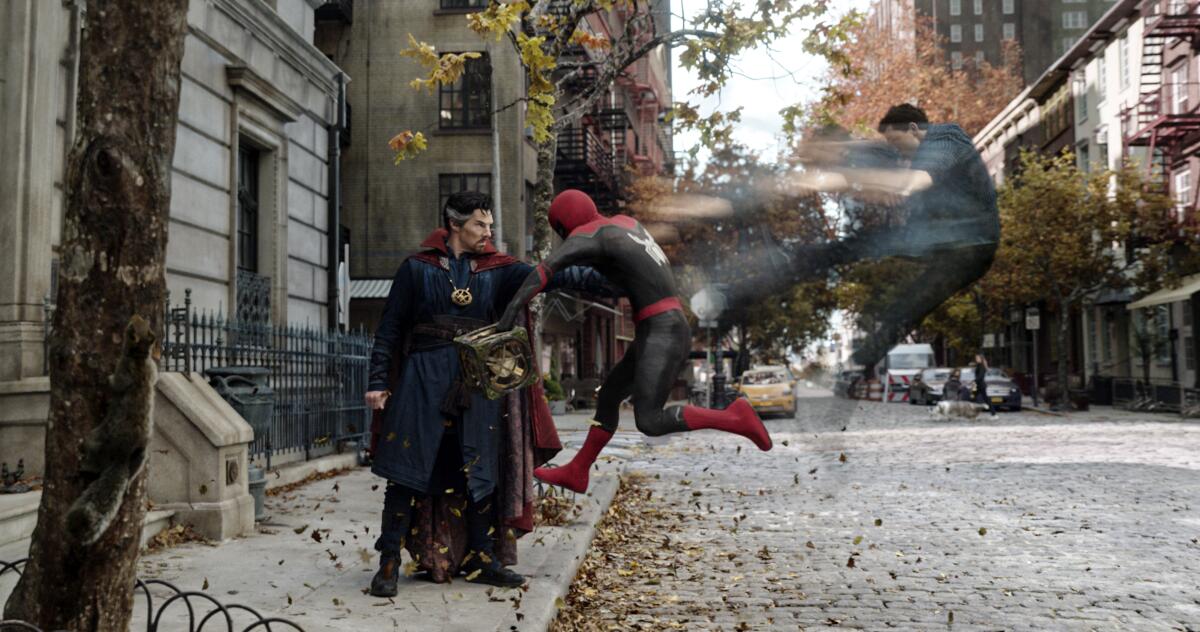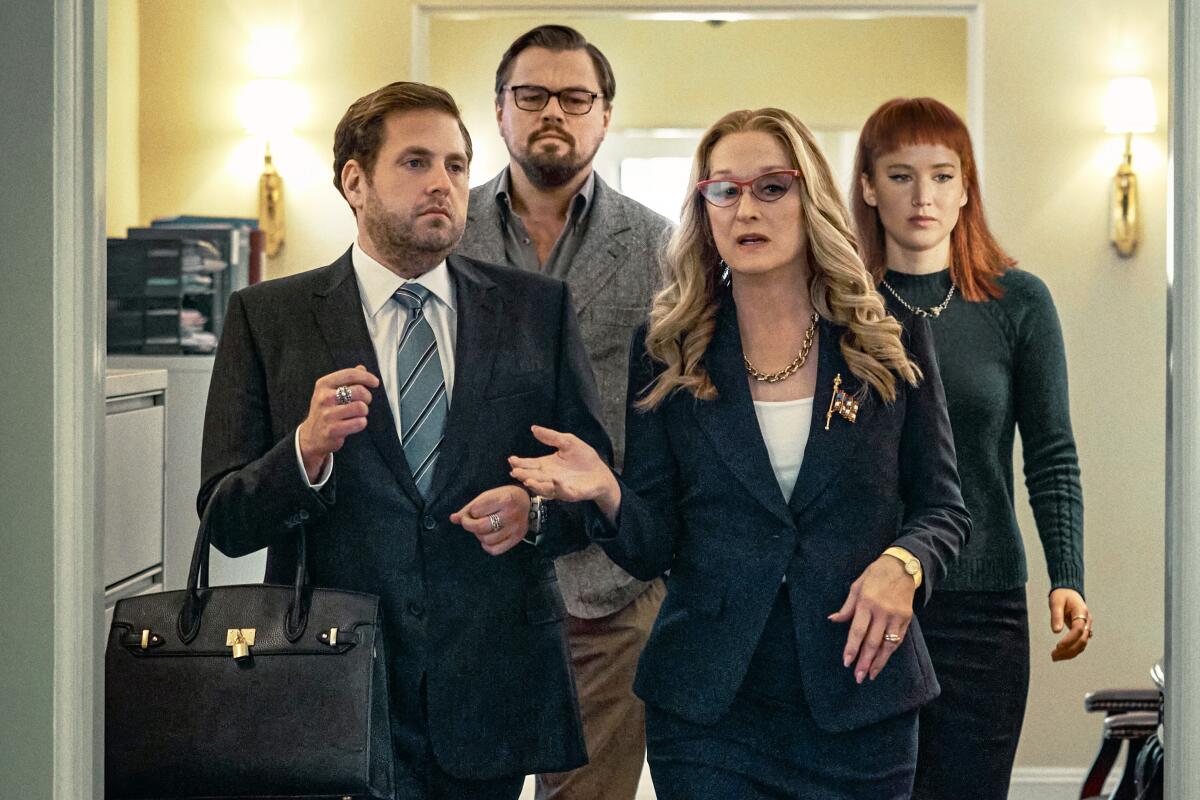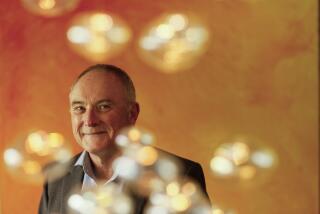How ‘Don’t Look Up’ and ‘Spider-Man’ mix tone and action through editing

“Spider-Man: No Way Home” and “Don’t Look Up” share more than massive popularity. The box-office and Netflix-viewership-dominating releases, respectively, are each packed with big actors and tonal gymnastics, from constant comedy to world-shattering drama.
Finding a crowd-pleasing balance of elements is the job of film editors, those folks who don’t just determine a movie’s pacing but often decide what is emphasized, how and when.
“Don’t Look Up” director Adam McKay went to Hank Corwin — previously nominated for editing McKay’s “Vice” and “The Big Short” — to make sense of his wide-ranging sociopolitical satire about a comet aiming to destroy Earth.
For his third “Spider-Man” film, which in the emerging Marvel Multiverse style incorporates villains and heroes from two earlier Sony Webslinger iterations, director Jon Watts tapped veteran “Avengers” montage man Jeffrey Ford and a previous collaborator, “Spider-Man: Far From Home” editor Leigh Folsom Boyd, to keep all of the story’s interdimensional mayhem and multiple Spideys straight.
Both films’ apparent chaos demanded precision cutting. It was crucial for the early “Spider-Man” sequence where Tom Holland’s Peter Parker keeps interrupting Benedict Cumberbatch’s Dr. Strange while he’s casting a spell, thus disrupting several universes.
“There’s a balance of the comedy, his world turning upside down in that moment and then coming back to the reality of what just happened,” Boyd tells The Envelope. “There is definitely a challenge to make it cohesive, so that the audience understands this is a jumping-off point for what comes after in the film. The language in that had to be very specific, so what follows makes sense.”
“The spell goes wrong, characters [from earlier Spider-film series] start dropping in,” adds Ford, who divided editing consecutive groupings of scenes with Boyd to enhance overall flow. “That’s something that we worked really hard on pacing. The audience gets a sense of apparent velocity of how many introductions are occurring and they can anticipate the next one. It’s sort of a wave.”

Corwin also had a formidable roster of supers — stars, that is — to allot screen time in “Don’t Look Up’s” SAG Award-nominated cast: Leonardo DiCaprio, Jennifer Lawrence, Meryl Streep, Cate Blanchett, Timothée Chalamet, Jonah Hill, Mark Rylance, Ariana Grande and Tyler Perry among them.
“Especially when you have people with this much horsepower, it’s easy to get blinded by their luminescence,” acknowledges Corwin, who mixed anamorphic 35 mm film, vintage Ikegami vidcam, cellphone footage and other media for the film.
Avoiding star-blindness required a focus change during the editing process. The initial strategy of lengthy character inquiry was replaced with a funnier, more observational and faster-paced approach. An Oval Office scene, in which DiCaprio and Lawrence’s alarmed scientists try to get Streep’s calculating president and her chief of staff son (Hill) to take the impending extinction-level event seriously, reveals personalities with quick cuts between fashion choices, attitude poses and snarky interplay.
But as the situation deteriorates, Corwin changes his shot choices to evoke gravitas, while also adding depth to DiCaprio’s scientist.
“When Leonardo goes into his TV rant, I deliberately got in almost claustrophobically tight,” he says. “Not only were you right there with Leonardo, you felt his plight acutely. From that point on, the movie pretty much slowed down. It became much quieter and more intimate, with almost no jokes. What did Bertolt Brecht say? ‘He who laughs has not yet heard the bad news.’”
Comic relief is endemic to the MCU, and while its editors strove to keep “No Way Home’s” core drama — Holland/Parker’s traumatic transformation from boy to man, coupled with his concern for friends MJ (Zendaya) and Ned (Jacob Batalon) — prominent, they also knew humor would enhance the self-reflexive film’s money moment.
“The comedic conceit involves Ned’s grandmother,” Ford says about when former Spider-Men Tobey Maguire and Andrew Garfield first appear. “It’s a really pivotal scene, but the interesting thing about it is that you’d expect it to play in a very specific way, then you introduce this new character who has no understanding of what’s going on. It was hard to balance because the scene takes twists from totally absurdist comedy to absolute total drama, back to craziness to more heartfelt emotion — I mean, it is taking left turns like you wouldn’t believe.”
“Don’t Look Up” goes similarly all over the place, which is a pretty good trick for a film shot under COVID restrictions. Corwin added scope with montages of worldwide impact and nature inserts, not so much to underscore the story’s climate change metaphor, but to represent irreducible truth in a scenario steeped in the misinformation of our age.
Unruly as it looks, each shot was carefully considered; even the glimpse of crew members that McKay has defended online had purpose.
“I loved it!” Corwin says, when he found the skateboard party “goof.” “Maybe this was pretentious of me, but if this movie lasts 50 years, I wanted to show a time capsule of people wearing masks and visors and gloves. Having that frame being really messy was exactly what I wanted. So don’t take it from McKay, take it from the editor: I did that very deliberately.”
More to Read
From the Oscars to the Emmys.
Get the Envelope newsletter for exclusive awards season coverage, behind-the-scenes stories from the Envelope podcast and columnist Glenn Whipp’s must-read analysis.
You may occasionally receive promotional content from the Los Angeles Times.









